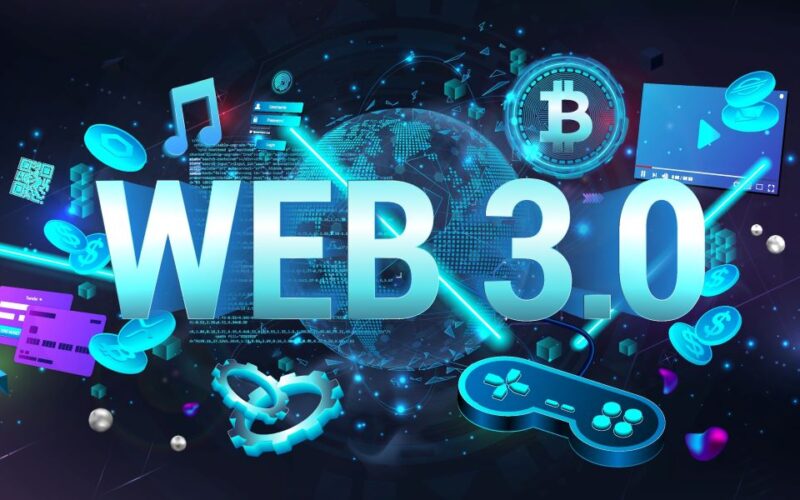Explaining Web 3.0
Web 3.0 is a future version of the internet that will be based upon public blockchains, a record-keeping system best known for its success with cryptocurrency transactions. The most attractive feature of Web 3.0 is its decentralization. This means that instead of the consumers accessing the internet via tech giants such as Google, Apple, or Facebook, the individual user will be empowered to own and govern some parts of the internet.
Web 3.0 does not require “access permission”, which denies the central authorities any right to decide who gets access to what particular service. It is also free from the shackles of “trust”. This translates into the fact that an intermediate entity is not necessary for virtual transactions to take place between any number of involved parties. Since these agencies normally work with most of the data collection, Web 3.0 is known for better protection of user privacy.
One of the most popular components of Web 3.0 is Decentralized Finance, better referred to as Defi. It comprises executing the dynamic financial transactions of the real world on the blockchain without any intervention from governments or banks. However, it is pertinent to note that many major corporations are pouring huge sums of money into Web 3.0 and it is quite easy to decipher that they will be certainly looking for some form of centralized power.
To better explain Web 3.0, let us go through a brief evolution of the Web and understand how it has reached this point.
Evolution of Web
The World Wide Web (WWW) is a tool that billions of people use on a daily basis to exchange, read, and write information and share it with others over the internet. Over the years, the web has drastically changed and the current form is extremely different from the days of its inception. The evolution of the web can be divided into three stages:
- Web 1.0
- Web 2.0
- Web 3.0
Let us now discuss them one by one.
Web 1.0
Web 1.0 is the earliest version of the modern-day internet. Web 1.0 can be thought of as only read-only or commonly known as Syntactic web. During that era, most of the stakeholders were consumers of content while the people who made these websites displayed the desired content in the form of either text or graphics.
Web 1.0 is comprised of static material rather than dynamic. For this purpose, hypertext mark-up language (HTML) was used to display data from a static file system rather than a modern-day database and there was little to no interactability. This era roughly lasted from 1994 to 2004.
Web 2.0
Most modern-day internet consumers have seen the current version of the web known as Web 2.0. Web 2.0 is also known as the interactive read/write and social web. The consumer does not need to be a developer to become a part of the creation process in the universe of Web 2.0. The majority of the apps have been designed in such a fashion that anyone can become a creator.
You can use your imagination to create anything, and share it with the entire world. Users can also post a video and it instantly becomes visible to millions of users on Web 2.0 to interact.
Popular sites such as YouTube, Facebook, Flickr, Instagram, Twitter, etc are just a very few examples of Web 2.0.
Technologies of the modern age including HTML5, CSS3, and Javascript frameworks such as VueJs, AngularJs, and ReactJs allow people to develop new ideas and trends to contribute more to the social web. Web 2.0 is built around people.
Take the example of any popular app like Twitter, Instagram, etc, and compare it to its initial days. Any major company of the current age follows the following procedure:
- Launch a new app
- Try to bring as many people as possible to the app
- Figure out a mechanism to make money from the user base
Whenever a developer or company releases a new application, the User Experience is given the utmost importance. Initially, companies focus on increasing their customer base by providing the best user experience and then slowly begin to profit from them.
However, venture funding mostly harms the life cycle and eventually the user experience of the app we use. Whenever a company raises money, the investors expect a return on their invested money with a much higher sum than they initially put. This eventually causes the firm to lose its ambition of organic growth and it is left with no choice but to choose one of the two paths of either marketing or selling the data.
With more data, comes more and improved targeted ads for major companies like Google, Facebook, Twitter, etc. This leads to more clicks and in turn more money. The exploitation and centralization of user data are fundamental to the functioning of the web as we know and use it now. As a result, data breaches are a common occurrence in Web 2.0 applications. There are even websites dedicated to keeping track of data breaches and informing you when your personal information has been hacked.
The user has no control over how the data is saved in Web 2.0. Businesses, track and save the data of their user base without their permission. The big giants who benefit from this data become in charge of it and manage it in their way. Going a step forward, even when someone expresses dissent from government policy, their governments can easily interfere. Control, or shut down the application using a centralized server.
Almost all of these ramifications will be resolved by Web 3.0 since it restructures the way the web is built.
Web 3.0
Web 3.0 is also known as the semantic web or read-write-execute. From 2010 onwards, it is the era that strives towards the future of the web. Advanced algorithms of Machine Learning and Artificial Intelligence allow computers to analyze data and intelligently distribute valuable content as per the needs of the user.
Web 3.0 is still evolving and being defined, and as such, there isn’t a canonical, universally accepted definition. What is clear, though, is that Web 3.0 will have a strong emphasis on decentralized applications and make extensive use of blockchain-based technologies. Web 3.0 will also make use of machine learning and artificial intelligence (AI) to help empower more intelligent and adaptive applications.
There are a few major differences between Web 2.0 and Web 3.0, but decentralization is the key distinction. The developers of Web 3.0 do not create and deploy applications on a single server or database.
Web 3.0 applications are, instead, built on blockchains, decentralized networks of many interconnected servers, or a combination of these two. Such applications are referred to as decentralized apps or DApps. This is a buzzword amongst the community of Web 3.0. The developers are always striving to deliver services of the highest quality.
Whenever Web 3.0 comes under discussion cryptocurrency is frequently mentioned. This is because a vast majority of the protocols used by Web 3.0 rely heavily on cryptocurrencies. Instead, it offers a monetary incentive (tokens) to anyone who wishes to help create, govern, contribute to or improve one of the projects.
Difference Between the Metaverse and Web 3.0
Many people consider Web 3.0 to be the same thing as the metaverse. However, they are not to be confused with each other. Web 3.0, as discussed above, is the third iteration of the World Wide Web (WWW). The metaverse, however, refers to a new virtual reality-based parallel internet world where users can interact with each other using 3D objects in a 3D space.
They are, however, inseparably linked to each other. The Metaverse will continue to exist in the surface and deep webs, even though Web 3.0 is still frequently referred to as “decentralized”; however, the Metaverse will remain “centralized” in terms of social media controlling platforms.
Advantages of Web 3.0 Over Predecessors
Since intermediaries are no longer involved in Web 3.0, the user data will no longer be controlled by any authority. This is a great edge since it drastically reduces the chance of government or corporate censorship, including the enhanced efficacy of denial of service (DoS) attacks.
More datasets and data allow for more information to be evaluated by the algorithms as more products connect to the internet. This allows them to provide more accurate information that is tailored to the demands of each user.
Before the inception of Web 3.0, finding the most accurate results on any search engine was quite a daunting task. They have improved their ability to semantically discover relevant results based on the context of the search and information over time. This has made browsing more convenient and accurate allowing everyone to get the information they need with enhanced precision.
Customer service is crucial for a great user experience on websites and applications related to the web. However, many successful web firms are unable to scale their customer support operations due to high expenses. Users can have a better experience engaging with support personnel by using intelligent chatbots that can talk to several consumers simultaneously, which is possible due to Web 3.0.









